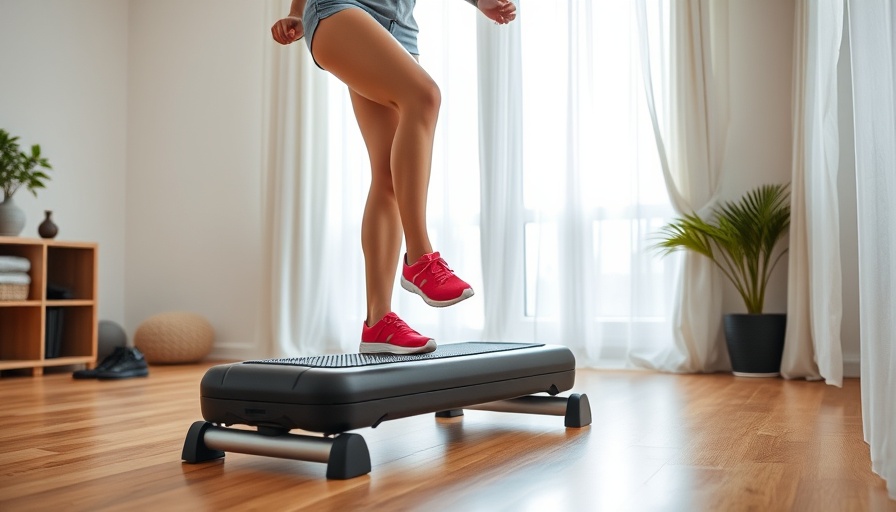
Understanding the Importance of Choosing the Right Weight
For many members of the SDA faith community, fitness is not just about physical health—it's a holistic journey that incorporates spiritual well-being. Understanding how to select the right weight for your workout is crucial not only for achieving physical fitness goals but also for nurturing our bodies as temples of the Holy Spirit. Choosing the appropriate weight can enhance workouts, maximize health benefits, and minimize the risk of injury.
In 'Day 25 Motivation – Pointers on How to Select the Right Weight for Today’s Workout,' the discussion dives into the nuances of weight selection and its significance, inspiring us to expand upon these key insights.
Historical Context: Fitness in the Faith Community
Historically, many faith traditions, including the SDA church, place importance on caring for our bodies. This belief stems from the understanding that physical health is inherently linked to spiritual health. The early Adventists were pioneers in advocating a balanced lifestyle, which included exercise. As today's society becomes more health-conscious, aligning our fitness practices with our faith can empower individuals within the community to embrace holistic wellness.
The Social Connection: Community Engagement in Fitness
Fitness isn't just an individual endeavor. Community engagement is vital. Group workouts, fitness classes, and church events focusing on physical activity foster social connections. Within the SDA community, gatherings often leverage physical activities for fellowship, enhancing both fitness and spiritual growth. This social connection encourages accountability, making the selection of workout weights an easier and more informed choice, as individuals can seek advice and encouragement from their peers.
Actionable Insights: Assessing Your Fitness Level
Before selecting weights for your workouts, consider your current fitness level. Beginners typically should start with lighter weights to master form and technique. It's essential to assess personal limits and gradually increase resistance to avoid injury. Here are some tips:
- Check your form: Prioritize mastering exercises with lighter weights before progressing.
- Listen to your body: If a weight feels too heavy and compromises your form, it's a sign to reduce.
- Seek advice: Don't hesitate to ask experienced members in your community for guidance.
- Track progress: Keep a journal noting the weights used and the number of repetitions.
Emotional Impact: The Journey of Self-Improvement
Choosing the right weight is not just about physical capability but also about self-improvement and personal growth. The emotional journey we undertake as we strive for better fitness levels can lead to enhanced self-esteem and resilience. Each time you successfully complete a workout with a chosen weight, it reinforces a sense of accomplishment, fostering a mindset of perseverance. The SDA community encourages this through scripture, which reminds us of the value of discipline and hard work.
Future Predictions: Trends in Fitness Within Faith Communities
As technology and fitness trends evolve, faith communities like the SDA church are increasingly integrating modern fitness methodologies into their practices. Virtual fitness classes, apps that track health metrics, and community challenges are becoming commonplace. The focus on achieving wellness goals while incorporating faith may lead to innovative fitness programs that satisfy both spiritual and physical needs.
Counterarguments: The Importance of Moderation
While selecting weights is vital, some argue that the emphasis on physical strength can overshadow spiritual development. It is essential to maintain a balance, ensuring that fitness complements, rather than competes, with one’s faith journey. The key is moderation; when physical activity enhances spiritual insight and vice versa, both aspects of health flourish.
Conclusion: Embracing a Holistic Approach to Fitness
In summary, the decision-making process in selecting the right weight for your workouts is critical not only for physical results but also for spiritual and emotional well-being. By engaging with both the community and biblical principles, you can create a balanced regimen that respects and enhances your faith. We encourage all members of the SDA community to approach their fitness journey proactively, integrating the insights discussed in this article.
As we reflect on these insights, let’s take the next step in our fitness journey together. Engage with your community, seek guidance, and remember that each decision you make—starting from the weights you lift—can contribute to your holistic well-being.
 Add Row
Add Row  Add
Add 




Write A Comment